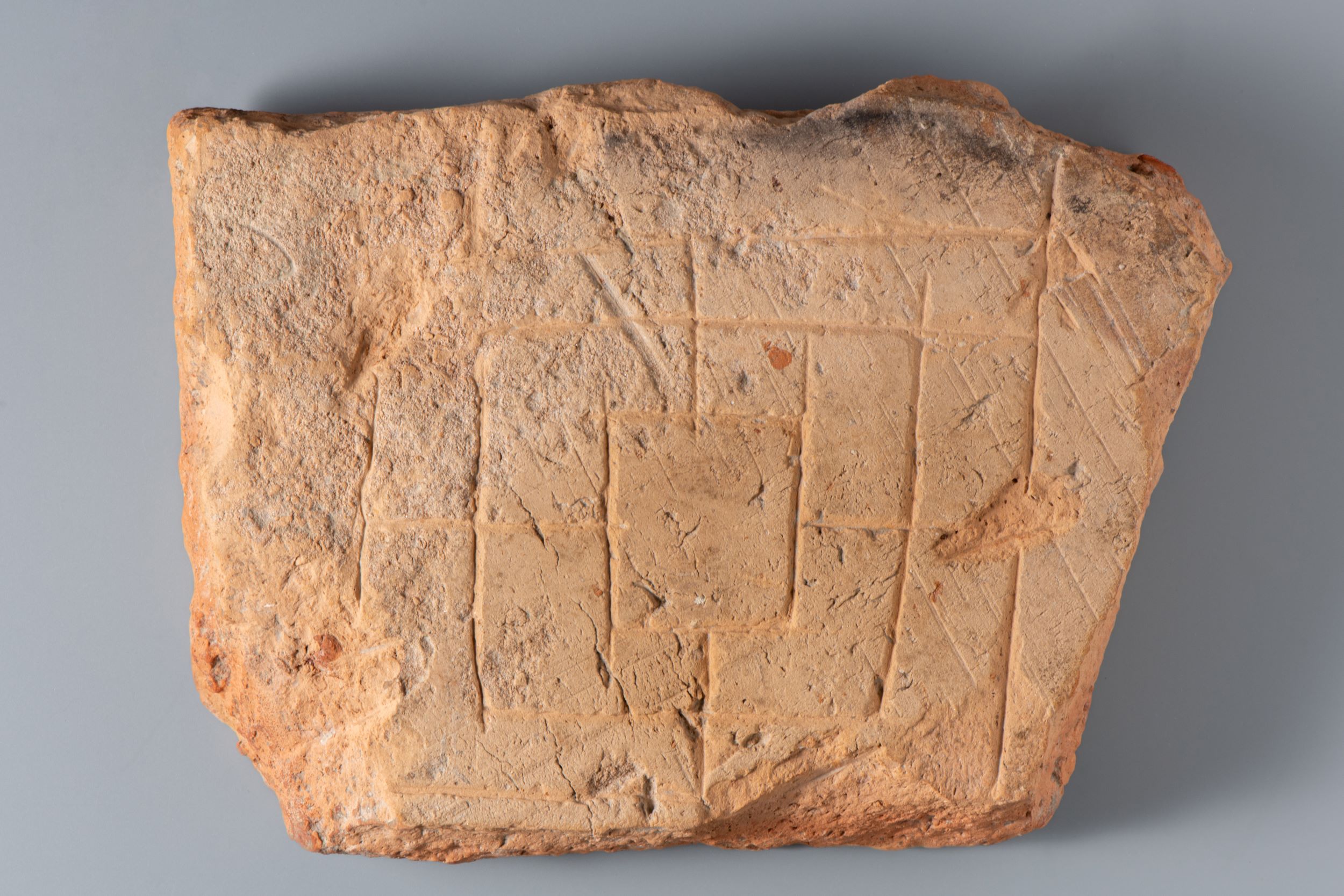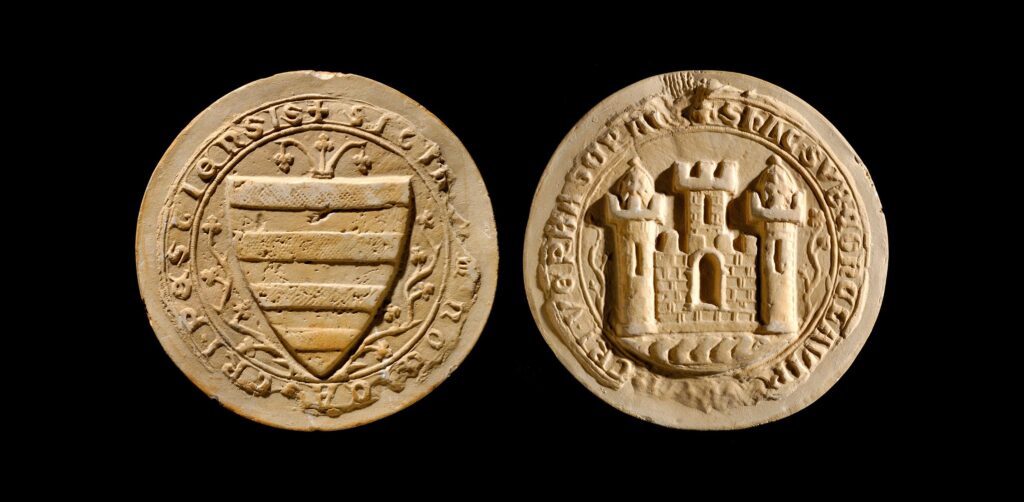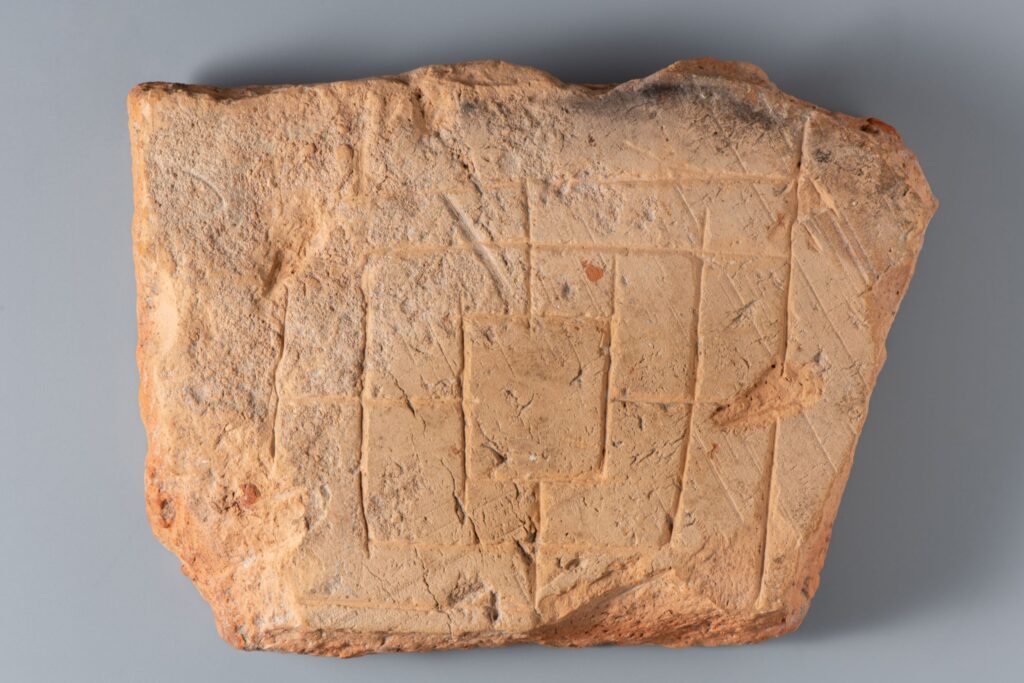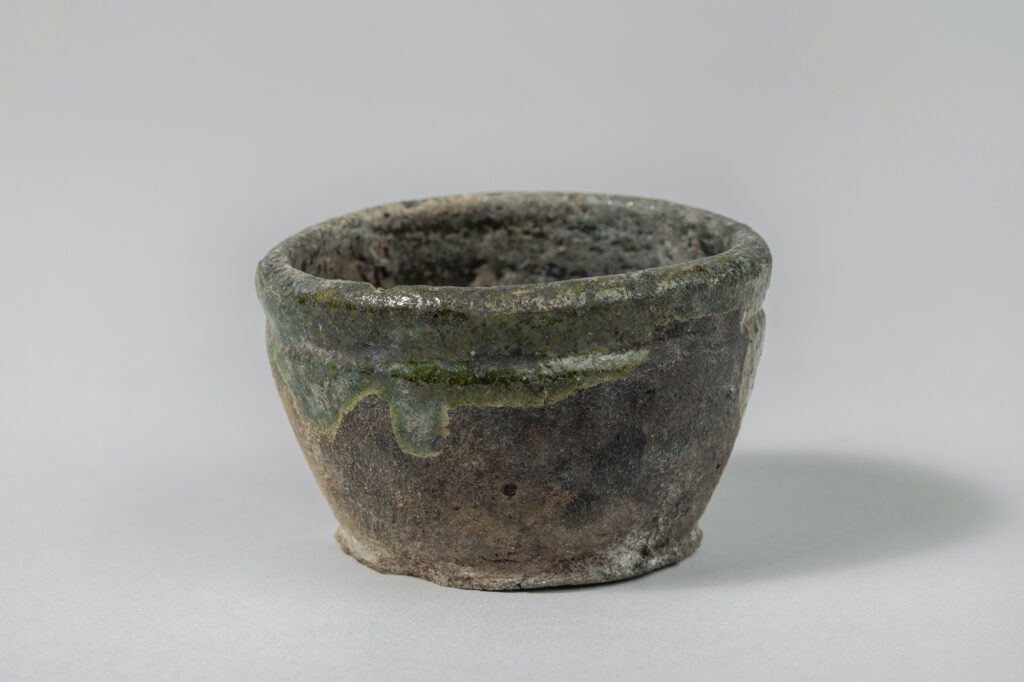In 2022, a preventive excavation was carried out in Jakab József Street in the XIII District. In the plot, parts of trench systems and some storage pits were found. In one of the latter, we found this brick, on one side of which we observed three concentrically nested squares. Unfortunately, no other datable finds were found in this pit, so based on observations in the area and on the site, the earliest date of the making of this piece may have been the 13th century.
The merils or Nine Men’s Morris is a motiv known since prehistoric times. It may have been a sacred symbol of world order and power over the world in ancient times. Over time, its deeper meaning lost its significance and it became popular as a game. It was the most popular board game in 11th- and 16th-century Europe, superseded only by chess in the early modern period.
In Hungary, the first known chessmen were found in Sarmatian (1-5th century AD) and Avar (6-8th century AD) sites, all of them carved into the floors of houses. The earliest examples in Hungary, dating back to the Middle Ages, date from the 11th century, but even our conquering ancestors could not have been strangers to theNine Men’s Morris. Typical of all social classes, the tablets were usually carved in brick or stone. In our museum’s collection, we can list examples from both Buda Castle and the village of Kána, which were carved into stone, or roof tiles.
Text: Orsolya Gálvölgyi archaeologist
Photo: Ákos Keppel



